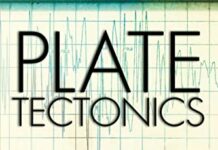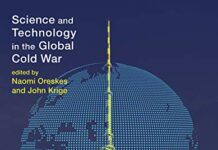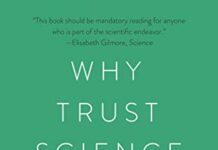
Ebook Info
- Published: 2010
- Number of pages: 369 pages
- Format: PDF
- File Size: 2.87 MB
- Authors: Naomi Oreskes
Description
The U.S. scientific community has long led the world in research on such areas as public health, environmental science, and issues affecting quality of life. Our scientists have produced landmark studies on the dangers of DDT, tobacco smoke, acid rain, and global warming. But at the same time, a small yet potent subset of this community leads the world in vehement denial of these dangers.Merchants of Doubt tells the story of how a loose-knit group of high-level scientists and scientific advisers, with deep connections in politics and industry, ran effective campaigns to mislead the public and deny well-established scientific knowledge over four decades. Remarkably, the same individuals surface repeatedly-some of the same figures who have claimed that the science of global warming is “not settled” denied the truth of studies linking smoking to lung cancer, coal smoke to acid rain, and CFCs to the ozone hole. “Doubt is our product,” wrote one tobacco executive. These “experts” supplied it. Naomi Oreskes and Erik M. Conway, historians of science, roll back the rug on this dark corner of the American scientific community, showing how ideology and corporate interests, aided by a too-compliant media, have skewed public understanding of some of the most pressing issues of our era.
User’s Reviews
Reviews from Amazon users which were colected at the time this book was published on the website:
⭐I came across this book after reading two books on the science of climate change. I, therefore, was familiar with the denial movement’s efforts to quash the science in that case. Merchants of Doubt showed me just how this phenomenon was not just an issue with climate science but with many other facets of science. Oreskes and Conway summed it up nicely saying, “Doubt is crucial to science – in the version we call curiosity or healthy skepticism, it drives science forward – but it also makes science vulnerable to misrepresentation, because it is easy to take uncertainties out of context and create the impression that everything is unresolved.” This is their culmination of five years of research.The authors begin, by explaining the doubt that was sowed by the tobacco industry. I think we are all familiar with the manner in which the industry tried to persuade the public that smoking and second hand smoke were not dangerous. This continued on with the Strategic Defense Initiative during the Regan administration where a coordinated attack was made on the concept of a nuclear winter as proposed by Carl Sagan and others. This marked a period where “the right-wing turn against science had begun.” The attack on nuclear winter was a prelude to the fights that were to come. Continuing to the subject of acid rain, the authors noted a familiar pattern emerging, and that was that scientific facts were published in peer review scientific journals – where few non-scientists would see them – while all the claims that acid rain was not a problem pushed by the deniers ended up in the mainstream media for all to see.The next topic was the fight over the ozone hole. The authors explained in detail the counter narrative proposed by the ozone hole deniers despite all the scientific evidence to the contrary – that the ozone depletion was a natural variation “that was being cynically exploited by a corrupt, self-interested, and extremist scientific community to get more money for their research.” Really? – no, of course not. This was to be the narrative to be used by the global warming deniers as well. During the 1980s, “an anti-environmentalism had taken root in a network of conservative and libertarian think tanks in Washington,” such as the American Enterprise Institute, the Heritage Foundation, the Marshall Institute, and the Competitive Enterprise Institute. These institutes derived their support from businessmen, corporations, and conservative foundations. What the deniers were afraid of was anything that impeded the free markets and the capitalist system, or that caused the government to produce any kind of regulation that might affect business interests according to Fred Singer, a prominent individual in the denier movement.I particularly liked the section on global warming, having just read two books previously on this “seemingly” controversial subject. The authors show that there is, in fact, no controversy; the climate scientists are correct in their assessments – yes, really! It was the small number of key people, such as Seitz, Jastrow, Nierenberg, and Singer who engaged in a campaign of misinformation, and these people, along with others, can “have large, negative impacts, especially if they are organized, determined, and have access to power.” These men had the power by virtue of positions as physicists during the cold war era. This movement has turned into a stealthy financed, powerful, conglomerate of various organizations bent on attacking the science in order to achieve various political and industry goals.And now we turn our attention to Rachel Carson and her book Silent Spring. This book was written in 1962. I have heard the harsh criticism – bordering on contempt – against her by various right-wing media outlets, and I wondered what in the world this woman did over fifty years ago, and why is this decades old debate being reopened. The authors brilliantly cleared up my questions. You might know that Carson brought attention to the indiscriminate use of pesticides in the environment. Eventually, about ten years later, a ban was implemented by Richard Nixon. This turned out to be an example of regulation done well, based on several national level science assessments that confirmed the dangers of the persistent chemical DDT. Well, as the authors point out, “free marketers realized that if you could convince people that an example of successful government regulation wasn’t, in fact, successful – that it was actually a mistake – you could strengthen the argument against regulation in general.” Also noted is that the environmental movement was shifting from an aesthetic environmentalism towards one more oriented in favor of legal regulation. Ah, now we know why this matter is in the news, and why the attack on Carson. Carson’s input was fundamental to this reorientation. If Carson could be proved wrong, then perhaps this reorientation could be shown to be based on a fallacy, and the anti-regulatory powers that be could be vindicated. I don’t want to leave out that the authors make a very compelling case showing why DDT failed and why it did not lead to “millions of deaths” as claimed by people such as Steve Milloy (founder of The Advancement of Sound Science Coalition for Philip Morris) and J. Gordon Edwards (entomologist at San Jose State University) – a phrase that is now repeated by right-wing media outlets. This was a riveting chapter. It read like an intriguing suspense novel!I found the next chapter on free speech and free markets to be just as riveting. Many of these deniers believe in something that has been called “free market fundamentalism.” This basically says the free markets are the only way to run an economic system that will not ultimately destroy our freedoms. However, the authors note that this belief system is uncannily similar to its bête noir – Marxism. They say that like Marxism, laissez-faire economics claimed to be scientific, based upon immutable laws of nature, and also like Marxism, it has not stood the test of experience. If it were a scientific theory, it would have long ago been rejected.” They conclude that this fundamentalism is just an article of faith. But it is this “faith” that has resulted in these “fundamentalists” coming to the unbelievable notion that environmentalism is the next great threat to freedom, that it is a slippery path to socialism, that environmentalists are closet socialists, that people in the United Nations are connected to the International Socialist Party and they are the ones in the UN environmental program. I read this and said to myself: Wow, really! It appears that the Cold War Warriors (Jastrow, Seitz, Nierenberg, and others) needed a new threat and found it in environmentalism. But as a more in depth analysis shows, it is all about government regulation; anything that promotes more regulation, even if necessary, is anathema to these people, and, I might add, to the businesses that fund them. The sad part is the nature of the attacks on scientists doing good science. Some have become reluctant to make strong claims or err on the side of conservatism because of fear of attack. It seems that intimidation works. I could go on, but you’ll just have to read the book to get the full story.I highly recommend this book. It does an excellent job of clearing the fog of misinformation that seems so pervasive today. If you have any lingering doubts on any of these subjects or if you wonder what the truth of the matter is in each case, please read the book.
⭐This book made me angry. And it should make you angry as well. The title “Merchants of Doubt” comes from the same line from a tobacco company executive used in a similar book that came out a couple of years ago that I recently reviewed (Doubt is Their Product). The basis, first used by the tobacco industry many years ago, was that their goal was to “manufacture doubt” in the minds of the public and policy-makers so that no policy-making action would occur, or at least so that it should be delayed as long as possible. And the tobacco industry succeeded for decades after they themselves knew that tobacco/nicotine was addictive and caused cancer. Yet they carried on a well-funded campaign to confuse and disinform the public.Naomi Oreskes and Erik Conway are science historians. And what they have uncovered with this book should shock even those who are familiar with some of the tactics used by the professional denialist industry. What is even more shocking is how just a handful of scientists and their collaborators have had a hand in nearly every major science denial episode for the last 40 years. And in the center of it all is the George C. Marshall Institute, Fred Seitz, S. Fred Singer, and the lesser known but equally deceptive William Nierenberg and Robert Jastrow.After the tactics were perfected in the fight to deny that smoking causes cancer, these handful of men with close ties to the Reagan and conservative ideologies employed them over and over again to deny smokestack emissions cause acid rain, CFCs cause ozone depletion, second hand smoke cause cancer in non-smokers, and greenhouse gas emissions cause global warming. In all cases the science has been right, and this group of men helped delay action for many years until even their deceit couldn’t hide the truth.And those tactics, repeated to deny the science in each of these issues, were all the same: employ a few scientists willing to shill for the industry or who are “skeptical” (to create the illusion of credibility), focus the efforts through well-funded right wing think tanks (to create the illusion of independence), create “new” science specifically designed to create uncertainty (i.e., not to answer questions, but to create contrasting data they can misrepresent), hyperventilate about how “the science is not settled” (knowing that science is never settled, but the public won’t understand), and of course, using their PR skills, Frank Luntz wordsmithing, and punchy – though meaningless – catchphrases like “sound science” to make it sound like they are saying something when they are not saying anything.What I found amazing was how the origins of the George C. Marshall Institute and all of its subsequent science denialism came out of the cold war fight against communism. These handful of scientists were atomic bomb builders and astrophysicists who had no expertise in any of the science they were denying. But they had connections, most notably with the Reagan administration and the Strategic Defense Initiative (Star Wars) for which the George C. Marshall Institute was started to sell to the public, the military, and the conservative legislators they were trying to influence. Yet despite this lack of any expertise they continued to insert themselves into the acid rain debate, the CFC debate, the second hand smoke debate, and the climate change debate. And each and every time their goal was to push the denial of the science. They equated environmentalism with communism (“green on the outside, red on the inside”). And using their lobbying skills and influence they were able to create the impression that there was still a raging debate in the science, even though in all cases the science was overwhelming and they represented a very minority opinion. Actually, in all cases they were not being scientists at all, but rather advocates for non-action (all of these men had long-since stopped doing actual research, and none of them had ever done research in the areas of science they were denying).What is most disturbing is that they routinely employed unscientific methods and deceit to push their political views. These handful of men have almost single-handedly cost the lives of thousands of Americans and increased the cost to taxpayers millions or even billions of dollars through their denial of the science. Most egregious in this has been S. Fred Singer. First as a denier that smoking caused cancer, then as a denier that CFCs caused ozone depletion, and now as a denier of climate change, Singer has used despicable methods to deceive fellow scientists who were too slow to realize that such deceit was possible from one of their own. What he did to Roger Revelle on his death bed is disgraceful. What he did to Justin Lancaster is despicable. What he and others did to Ben Santer is just one more example showing that the denialist industry, led by these few men and paid for by the biggest industries on the planet, will go to no end to deny any science or destroy any scientist in their path. The recent attacks on climate scientists like Michael Mann and Phil Jones are the latest iterations in the denialist industry’s tactics.And according to Oreskes and Conway, the denialist industry isn’t even satisfied denying the present and the future, they have also recently turned to denying the past. You may have heard parroted from people here that the banning of DDT by environmentalists has killed millions of people in Africa. Not true. But the denialist industry has decided it needs to deny ALL science, and that means going back to the 1960s to attack Rachel Carson, whose book “Silent Spring” documented the dangers of widespread pesticide spraying. DDT was banned in the US after it was discovered that it caused the thinning of eggshells in raptors like our national symbol, the Bald Eagle. But like all the other denialist attacks, the idea that the US ban cost lives in Africa is completely false. DDT use actually increased in Africa after it was banned in the US, and in fact is still used today. It just doesn’t work any more because the mosquitoes it is supposed to kill gained resistance to it, in part because of the overspraying advocated by the manufacturers to sell more product. But this is just one more case where facts are tossed aside in favor of an ideological promotion of an anti-science agenda designed to further the profit of the few at the expense of the many.Oreskes and Conway end their book with “A New View of Science,” which I’ll let people read for themselves. And they should. In fact, they must. This book must be on the reading list of anyone and everyone interested in science, so they can read for themselves how just a handful of unscrupulous scientists with deep political connections and a near religious anti-communism fervor have been at the heart of every denial of science in the last several decades. As I indicated to open this review, the book made me angry. And we should be angry. And then we should not let them get away with it any longer.
⭐As a sceptic I decided to give this a go, and am glad I did. It tells a terrible tale of where Big Money can (and has) led us. But I was not convinced. Oreskes has played a significant part in the AGW story herself. Like other questions, it is not addressed. In the end I could only conclude that the book is an attempt to distract, not in or of itself a reason to discard doubt.
⭐A well informed and useful book spoiled by the writers’ inability to suppress their own prejudices—like something out of the Guardian newspaper
⭐I strongly recommend this book to anyone, old or young, student or professional.The authors write with candour and thoroughly support their claims through detailed analysis and documentation.Far from just a list of facts however, this is one of the most pleasant books i have read in my life, written with clarity and vigour.The authors do a superb job at pealing back the veil of disinformation and exposing the realities of the organised and well funded agents responsible.Pleasant as well as infuriating of course, as i doubt anyone who reads this book will be able to do so without several times uttering under their breath “f**k these guys”.My only grievance is that the authors did not point the reader in the direction of a solution. They conclude that the ideological thread which lead many of the main actors in this account to act so unabashedly unscientifically was one of free-market fundamentalism. They also identified the conundrum faced by scientists in speaking out agains such attacks, as they may then face harassment themselves.Where can we look to disrupt the forces that drive this peddling of doubt, muddying the waters, often at the cost of society and now the world?I’m certainly inspired to find out
⭐A compelling and disturbing read, authoritatively exposing those in the US who seek to obscure environmental science and deceive the public on issues from cigarette smoke to climate change, and how they now seek to reverse half a century of environmental protection. If you have wondered why the media and public opinion have lagged so far behind our understanding of climate change, here is an essential account of how this has taken place. And if you are keen that governments now start to act on the basis of science, you must read this book.
⭐Well written, fascinating book – amazing to see how just a few of the same people have been behind all of this…
Keywords
Free Download Merchants of Doubt: How a Handful of Scientists Obscured the Truth on Issues from Tobacco Smoke to Global Warming in PDF format
Merchants of Doubt: How a Handful of Scientists Obscured the Truth on Issues from Tobacco Smoke to Global Warming PDF Free Download
Download Merchants of Doubt: How a Handful of Scientists Obscured the Truth on Issues from Tobacco Smoke to Global Warming 2010 PDF Free
Merchants of Doubt: How a Handful of Scientists Obscured the Truth on Issues from Tobacco Smoke to Global Warming 2010 PDF Free Download
Download Merchants of Doubt: How a Handful of Scientists Obscured the Truth on Issues from Tobacco Smoke to Global Warming PDF
Free Download Ebook Merchants of Doubt: How a Handful of Scientists Obscured the Truth on Issues from Tobacco Smoke to Global Warming




